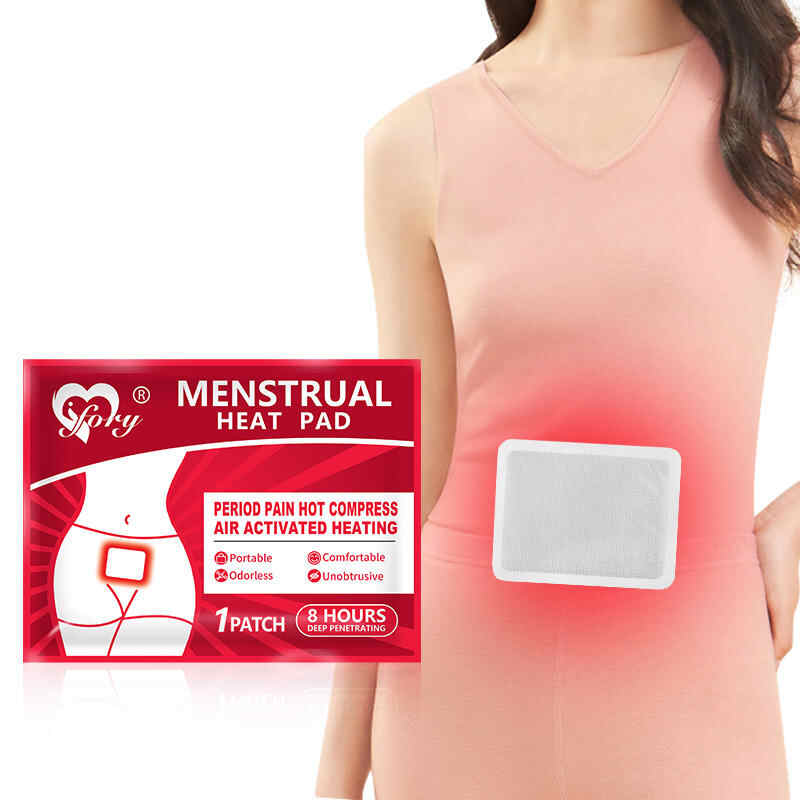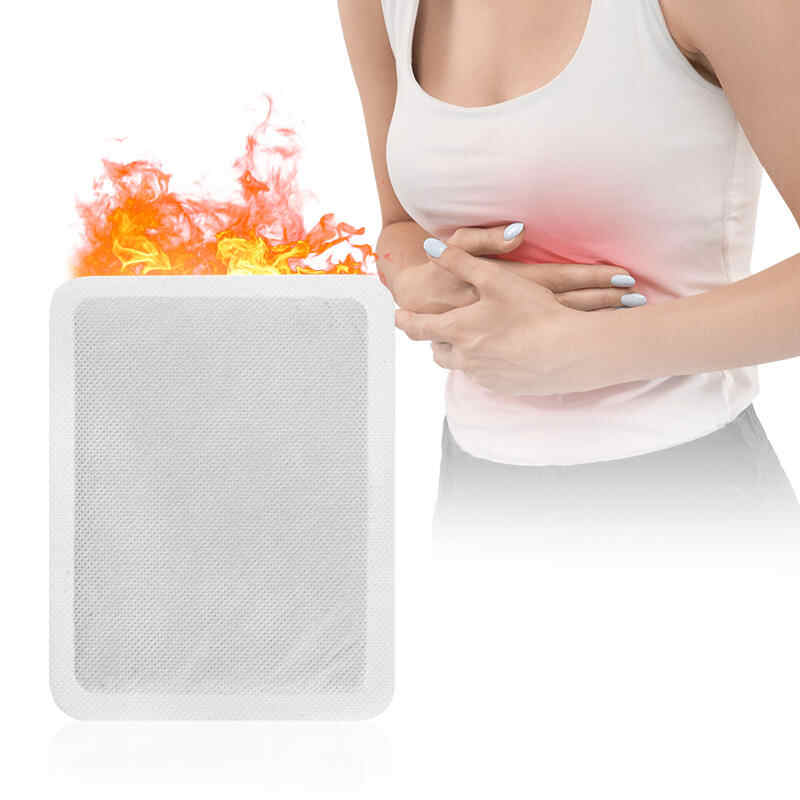How Do Menstrual Heating Pad Suppliers Ensure Sustainable Packaging?
In the modern wellness industry, sustainability is no longer just a buzzword — it has become a defining factor that shapes purchasing decisions and brand reputation. For companies producing or selling menstrual care products, eco-friendly practices are particularly important because consumers are increasingly demanding ethical, safe, and environmentally responsible options. Among these practices, sustainable packaging stands out as one of the most impactful ways to reduce environmental footprints and strengthen brand value.
So, how do Menstrual Heating Pad Suppliers ensure sustainable packaging without compromising product quality, safety, or affordability? In this article, we’ll explore how leading Menstrual Heating Pad Manufacturers and Menstrual Heating Pad OEM partners are transforming their packaging strategies to align with global sustainability goals, all while maintaining competitiveness and customer trust.

1. The Growing Demand for Sustainable Menstrual Heating Pad Packaging
The menstrual product market is evolving. More consumers are becoming aware of the environmental consequences of excessive plastic use and non-recyclable materials. This growing awareness has driven the need for Menstrual Heating Pad Manufacturers and Private Label Menstrual Heating Pad brands to prioritize eco-friendly packaging.
Sustainable packaging is not just about reducing waste; it’s about building a responsible brand identity. Brands that promote environmental values are more likely to attract loyal customers — especially Millennials and Gen Z — who prefer sustainable wellness solutions.
A survey by Nielsen found that 73% of global consumers are willing to pay more for sustainable packaging, emphasizing that environmentally responsible packaging isn’t only ethical; it’s also profitable.
2. Why Sustainable Packaging Matters for Menstrual Heating Pad OEM Brands
When developing Custom Menstrual Heating Pad products, packaging plays several crucial roles:
Protecting the product: Keeping heating pads sterile, moisture-free, and safe during storage and transport.
Communicating brand values: The design and material choice reflect a company’s sustainability commitment.
Reducing waste and pollution: Eco-friendly packaging minimizes landfill contribution and carbon emissions.
For a Menstrual Heating Pad OEM, adopting sustainable packaging demonstrates corporate responsibility and future readiness. It signals to retailers, distributors, and consumers that the company values both performance and planet.
3. Key Sustainable Packaging Strategies Used by Menstrual Heating Pad Suppliers
To ensure sustainability without sacrificing product protection, Menstrual Heating Pad Suppliers implement a range of innovative strategies. Let’s explore the most effective ones:
a. Using Recyclable and Biodegradable Materials
One of the most common approaches is replacing traditional plastic with eco-friendly alternatives such as:
Kraft paper: 100% recyclable and biodegradable, offering durability with a natural aesthetic.
PLA (Polylactic Acid): A plant-based material derived from corn starch that’s compostable and non-toxic.
Recycled cardboard or paperboard: Often used for outer packaging, ensuring structural integrity and sustainability.
By sourcing such materials, a Menstrual Heating Pad Manufacturer can dramatically reduce its environmental footprint while maintaining strong product protection.
b. Minimizing Packaging Volume
Excessive packaging is wasteful and increases transportation emissions. Many Menstrual Heating Pad OEM facilities now design packaging that’s compact, lightweight, and minimal. Optimizing dimensions not only saves materials but also lowers shipping costs — a win-win for both brands and the planet.
c. Incorporating Water-Based Inks and Adhesives
Traditional printing often uses chemical-based inks that release volatile organic compounds (VOCs). Sustainable Private Label Menstrual Heating Pad brands opt for water-based or soy-based inks, which are safer for both workers and the environment. Similarly, eco adhesives made from natural polymers reduce toxicity in the recycling process.
d. Offering Reusable Packaging Options
Some innovative Custom Menstrual Heating Pad lines now feature reusable pouches or tins for consumers who prefer long-term use. These can be refilled or repurposed, reducing waste over time.
e. Partnering with Certified Eco-Friendly Suppliers
Responsible sourcing is key. Reputable Menstrual Heating Pad Suppliers partner with packaging manufacturers who hold environmental certifications such as FSC (Forest Stewardship Council) or ISO 14001, ensuring that materials come from sustainably managed forests and ethical supply chains.
4. Technological Innovations Supporting Sustainable Packaging
Technology is driving the next generation of eco-friendly menstrual product packaging. Advanced Menstrual Heating Pad OEM facilities now use digital tools to enhance sustainability and efficiency in packaging design.
a. Lifecycle Analysis (LCA)
Manufacturers conduct lifecycle assessments to evaluate environmental impact — from raw material extraction to disposal. This helps in choosing the most eco-efficient packaging materials.
b. Smart Packaging Design
3D modeling and prototyping tools allow Custom Menstrual Heating Pad developers to test new designs with minimal material waste.
c. Automated Production and Waste Management
Automation ensures precise material usage and reduces offcuts during packaging production, cutting down waste generation significantly.
d. Renewable Energy in Packaging Production
Leading Menstrual Heating Pad Manufacturers are now investing in renewable energy sources — such as solar-powered packaging lines — to further minimize carbon emissions during production.
5. Balancing Sustainability with Cost Efficiency
A major concern for many brands is whether eco-friendly packaging increases costs. While sustainable materials can initially seem more expensive, Menstrual Heating Pad OEM experts have developed methods to maintain cost-effectiveness:
Bulk sourcing: Large-scale material purchases lower per-unit costs.
Design optimization: Using fewer layers or components reduces both material costs and production time.
Supply chain efficiency: Partnering with local or regional suppliers cuts transportation expenses and emissions.
Brand value return: Sustainable packaging attracts premium buyers and can justify slightly higher price points.
In many cases, brands find that the long-term financial benefits — including improved brand reputation and reduced waste — outweigh the initial investment.
6. Case Study: Private Label Menstrual Heating Pad Brand Adopting Sustainable Packaging
A European wellness startup partnered with a Menstrual Heating Pad Supplier to launch a Private Label Menstrual Heating Pad line that emphasized sustainability. By switching from plastic wrap to compostable PLA film and using 100% recycled paper boxes, they reduced packaging waste by 65%.
Despite the switch, production costs decreased by 10% due to lightweight materials and efficient packaging design. The brand’s eco-conscious positioning also attracted new distributors in the organic wellness segment — proving that sustainability can directly enhance profitability.
7. The Role of Menstrual Heating Pad Manufacturers in Circular Economy
True sustainability doesn’t stop at recyclable materials; it’s about creating a circular packaging system where waste is minimized and reused. Forward-thinking Menstrual Heating Pad Manufacturers are now experimenting with:
Return-and-reuse models: Encouraging customers to return packaging for recycling or refilling.
Compostable packaging solutions: Using materials that break down naturally without leaving residues.
Zero-waste packaging facilities: Reducing manufacturing waste through recycling programs within the factory.
This transition not only supports environmental goals but also positions brands as industry leaders in green innovation.
8. How Brands Can Partner with Sustainable Menstrual Heating Pad Suppliers
To successfully integrate eco-friendly packaging into their product lines, brands should look for a Menstrual Heating Pad Supplier or OEM partner with:
Proven sustainability certifications (ISO 14001, FSC, or biodegradable compliance).
Experience in Custom Menstrual Heating Pad packaging design.
Transparent sourcing practices for packaging materials.
Flexible OEM capabilities for brand-specific sustainability goals.
Innovative R&D departments exploring recyclable and compostable solutions.
Collaboration is key. With a reliable Menstrual Heating Pad Manufacturer, brands can build eco-conscious packaging systems that align with both environmental and commercial objectives.
9. The Future of Sustainable Packaging in the Menstrual Heating Pad Industry
The future of menstrual product packaging will focus on:
Fully compostable materials that decompose within months.
Digital printing that eliminates waste from traditional ink systems.
Lightweight packaging optimized for e-commerce distribution.
Transparency labeling that highlights environmental impact scores.
With these innovations, Menstrual Heating Pad OEM and Private Label Menstrual Heating Pad brands will lead the next generation of sustainable wellness solutions — balancing convenience, comfort, and care for the planet.
Conclusion
Sustainable packaging is no longer an optional feature for menstrual care products — it’s a business imperative. Menstrual Heating Pad Suppliers and Manufacturers are reimagining packaging with recyclable materials, cleaner processes, and efficient designs that protect both the product and the planet.
By partnering with a responsible Menstrual Heating Pad OEM, brands can launch eco-friendly, cost-efficient, and visually appealing Private Label Menstrual Heating Pads that align with global sustainability goals.
Sustainability is not a limitation; it’s an opportunity — one that defines the future of menstrual wellness brands worldwide.
Related Questions and Answers
1. What materials are used in sustainable menstrual heating pad packaging?
Eco-friendly packaging often uses kraft paper, biodegradable PLA film, and recycled cardboard — all of which are renewable and compostable.
2. How can a Menstrual Heating Pad Manufacturer reduce packaging waste?
By optimizing packaging design, using automated cutting systems, and implementing zero-waste production practices.
3. Are sustainable packaging options more expensive?
Not necessarily. Efficient design, bulk sourcing, and reduced material use often make them as cost-effective as conventional packaging.
4. Can I request eco-friendly packaging for a Private Label Menstrual Heating Pad?
Yes. Most Menstrual Heating Pad OEM partners offer customizable sustainable packaging options to fit brand identity and budget.
5. How does packaging impact a brand’s eco reputation?
Packaging is often the first physical interaction customers have with your product. Eco-friendly packaging builds trust, signals responsibility, and enhances overall brand value.






